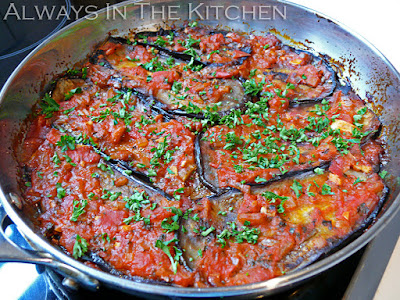
I always associated plov with Russian cuisine -- partly because it has been adopted as the pilaf of choice for much of the former USSR, and partly because there were very few restaurants in my hometown (or, later, the city of Vancouver) featuring cuisine from Eastern Europe or Central Asia. Russian, you might be able to find in the city (or more likely, a blend of Russian and Ukrainian dishes), but not much luck trying to find restaurants featuring Georgian, Kyrgyz, or Uzbek food.
Plov, as it turns out, is ultimately a traditional Uzbek dish. By any other name, it might be palov, polov, or pilav, or perhaps more recognisably pilau, pulau, polow, pilaf, or almost any other spelling imaginable. It is considered a manly sort of dish to cook, the making of which can take on similar cultural overtones (sometimes similarly proprietary) to the idea of the masculine art of barbecue in North America. Traditional Uzbek plov is made with lamb (or mutton), which necessitates a long simmering time before the rice is added, to ensure that the lamb is tender and the connective tissues have all melted into an unctuous, satisfying texture. However, you can also make it with beef, and increasingly it is being made with chicken, whose speedy cooking time means the dish is on the table much, much faster. It is also easy and delicious, which are the only reasons that you need, to decide to make it.
Chicken Plov
Serves 4
400 grams boneless skinless chicken
1 head garlic plus 2 cloves
1 medium onion, finely diced
1 large or 2 medium carrots, grated
2-3 bay leaves
1 teaspoon ground cumin
1 teaspoon ground coriander seed
pinch ground turmeric
1/2 teaspoon white pepper
1/2 teaspoon coarse salt (optional)
1 tablespoon olive oil
1 tablespoon duck fat (or more olive oil)
200 grams long grain rice
2 cups (500 ml) heated chicken broth or stock
1 - 2 tablespoons vodka
Finely chop the onion and 2 cloves of garlic. Slice the chicken (thigh is best, breast is also fine) into bite-sized chunks. Peel (if necessary) and grate the carrot coarsely. You could julienne the carrot if you prefer. Remove the outer layers of paper from the head of garlic, leaving the head whole, but the cloves still encased in one layer of skin. Use a very sharp knife to slice off the tip of the head of garlic, and set the whole head aside (tips can be added to the onions and chopped garlic).
In a medium-large pot or wok (the one I used is probably a little too big for this amount of food, and would have been perfect for a double recipe), heat the olive oil over a medium heat until just shimmering. Add a third of the chicken in a single layer, and let sizzle for 30 seconds or so before you stir through once, push the cooked pieces to the outside edge, and add the next third of the chicken. Continue until all the chicken has been lightly seared on at least one side, and remove to a holding plate.
Into the emptied pot, add the duck fat, the onions and minced garlic, and the salt (if your broth or stock is quite salty, you might want to omit the salt). Sauté until the onions start to change colour, and then add the carrots. Continue to sauté, and add the bay leaves, turmeric, white pepper, ground cumin and coriander. Stir and cook for a few minutes, until the carrots are wilting down nicely. Deglaze by adding the vodka to the pot, and scraping up any flavourful bits that might be stuck to the bottom.
Return the chicken to the pot, along with any juices that have accumulated on the holding plate. Pour the uncooked rice evenly over the chicken, smoothing it flat, and then gently pour the hot broth/stock/water over the rice, being careful not to disrupt the surface any more than is necessary. Smooth the rice a little again, if you need to.
Take the prepared head of garlic and plunge it cut-side down into the rice, leaving the root-end sticking up just a little. As soon as the liquid is starting to bubble a little, cover the pot with a tight-fitting lid, turn the heat to the lowest possible setting, and let cook undisturbed (no peeking!) for 17 minutes. When 17 minutes is up, still without lifting the lid/peeking, turn the heat off completely, and remove the pot to a resting place (a pot holder, or an unheated burner) for another 17 minutes. This time, when the 17 minutes is up, you are ready to serve.
You can upend it onto a fancy platter, or you can simply stir it through and spoon it into shallow bowls.It should be moist and fragrant, but not overly wet. Remove the garlic first, and squeeze the tender, fragrant cloves of garlic out of their skins by putting pressure around the base, scattering the cloves over the rice or dividing them amongst serving dishes. Some preparations call for a whole head of garlic per person being served, but I'll leave that up to your discretion. I've served it here with Ukrainian pickled tomatoes.

Leftovers reheat beautifully.


















